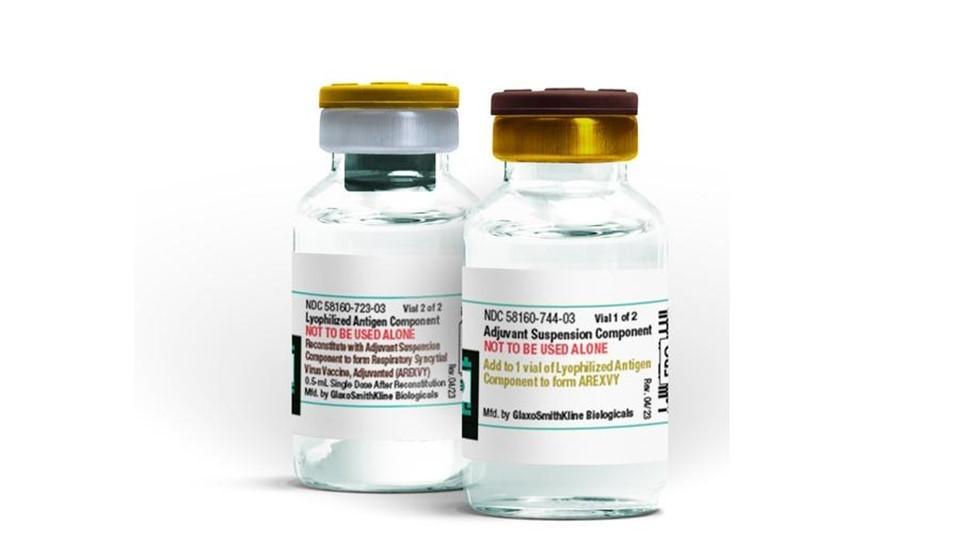AACR 2025: New modalities and remaining challenges

Talk elsewhere might have been of Trump’s tariffs lately, but the crowds at this year’s American Association for Cancer Research (AACR) meeting in Chicago in late April had better things to discuss.
In fact, when a host of biotech executives who attended the mammoth event were asked how they found it, their replies were almost uniformly upbeat.
“Energetic and forward-looking,” was how Anika Jaekel, senior director and head of translational biology and non-clinical pharmacology at German radiopharmaceutical developer Ariceum Therapeutics, described the atmosphere.
“Positive and focused,” said Marjorie Sidhoum, VP of business development & corporate communication at GPCR drug discovery firm Domain Therapeutics in France.
“Dynamic and inspiring,” said Sarah-Jane Neuberth, associate director of non-clinical development at German ADC-developer Heidelberg Pharma.
New modalities, technologies, and approaches
Science was firmly at the forefront of thoughts – and what a feast there was. With around 21,000 of the world’s top oncology researchers and executives attending, you would hope so too.
What trends did delegates notice, in terms of new modalities, technologies, and approaches? Precision, personalisation, and targeting was one major theme mentioned by many, while the adjacent growth of biomarkers and genetic profiling was another part of the same “tailor-made” trend, said Heidelberg Pharma’s Neuberth.
“One session featured several compelling presentations on KRAS inhibitors, degrader ADCs, and dual-targeting ADC strategies, reflecting the growing interest and momentum in ADC research and development,” she added. There was “such high interest” in another session on dual-targeting ADC strategies that it had to be streamed live to two extra rooms, she recalled.
Alessandra Micaela Villa, director of platform development at Amsterdam’s Kling Biotherapeutics, which interrogates patient-derived B-cells of elite responders to discover new targets and antibodies, chimed in with a similar assessment on targeting.
“From my perspective, the concept of targeted therapeutics remains undoubtedly the main trend,” she said. “In this respect, I can certainly mention multi-target antibodies, bringing active moieties or payloads such as small drug molecules or T-cell or NK cell engagers. In this case, I strongly believe that B-cell technology can help find new relevant targets and antibodies, and efficient, specific drug delivery.”
Tobias Schmidt, VP of discovery at DISCO Pharmaceuticals, which is finding new druggable targets by mapping the surface of cancer cells, noted there was “a considerable increase in dual targeting antibodies” presented at the conference, such as bispecifc ADCs and T-cell engagers targeting two tumour antigens. He added that “a rational design of target pairs […] will be crucial for the successful development” of such drugs.
Matthew Fyfe, CSO of UK-based preclinical biotech Outrun, which is using E3 ligase inhibition for protein stabilisation in the treatment of cancer and other diseases, said: “In the next five years, I expect that precision medicines will become much more prominent components of the oncologist’s armamentarium, with the use of cutting-edge biomarkers like ctDNA being combined with evidence-based discovery-to-development decision-making concepts.”
Giusy Di Conza, head of research at small molecule cancer therapeutics firm iOnctura, said ADCs were “heralding a shift towards personalised cancer therapy” – but she cautioned there were “still many challenges to overcome” with ADCs, such as their PD / PK profile and potential toxicities.
Another broad trend highlighted was the earlier-line use of technologies – not just maturing ones like checkpoint immunotherapies in the neo-adjuvant setting, but also newer ones like radiopharmaceuticals.
On the former, Stephan Schann, CSO of Domain Therapeutics, said: “The objective [of earlier use of immunotherapies] is to reduce tumour burden enough to achieve a cure with limited or no surgery.” GSK presented “groundbreaking data” in this endeavour in patients with mismatch repair deficient (MMRd) tumours, he said, which could herald “a significant paradigm shift.”
And 14 years after the first checkpoint inhibitor (ipilimumab) was approved by the FDA, research into immunotherapies and immunological approaches was still firing on all cylinders, Schann commented. “The expanding focus on immuno-oncology reflects a broader recognition of the immune system as a potent therapeutic option for cancer patients,” he said. “The pharma industry is working to push the boundaries of innovation in this space.”
In addition, rapidly developing tools such as liquid biopsies, organoids, and tumouroids, and (of course) AI were “reshaping preclinical and translational research” too, he said.
His colleague Nathalie Lenne, VP, strategic portfolio management at Domain Therapeutics, said: “What stood out [at AACR 2025] was the remarkable innovation in next-generation biologics, such as T-cell engagers and multi-specific antibodies. Pharma and biotech are intensifying efforts to overcome tumour resistance and escape mechanisms through increasingly sophisticated immunotherapeutic strategies.”
Scientific, practical, and political challenges remain
For most delegates, there is usually a ‘stand-out’ session that really sticks in the mind long after the conference itself. And for most, these are understandably related to their particular field of expertise. But for iOnctura’s Di Conza it was something different.
“For me, the presentation I most valued was from Patricia LoRusso, the current AACR President,” Di Conza said. “She presented an overview of the history of oncology drug development, but importantly she focused on the challenges we face as we endeavour to find not only a cure, but also a suitable treatment option – for all cancer patients. It was particularly poignant as she shared that both her parents had died from cancer when she was a child.”
Huge challenges remain of course – scientific, practical, and (let’s admit it) political.
On the scientific level, Pablo Ruedas Batuecas, chemistry scientist at Heidelberg Pharma, highlighted the puzzle presented by molecular degraders, which hold out the promise of being able to drug “undruggable” proteins – but are proving fiendishly complicated to solve.
On a practical level, Ariceum’s Jaekel pointed to the challenges around regulating, making, and moving radiopharmaceuticals - a problem unlikely to disappear in a hurry.
And on a political level, Fyfe of Outrun said out loud what others may well have been thinking. He warned there were “unprecedented challenges facing scientific research and development in oncology, arising by dint of political interference, institutional instability, and growing uncertainty.”
Although many at the conference were not unduly worried about tariffs – which are likely to impact those with approved drugs to sell, more than those developing them – there was particular concern about cuts to US university research and National Institutes of Health (NIH) funding, as well as job losses at key US agencies such as the Food and Drugs Administration (FDA).
The former could mean less money going into early-stage biotechs, while the latter could mean it takes longer to get drug designations or approvals. Such changes “could have profound effects on biotech,” Fyfe warned.













